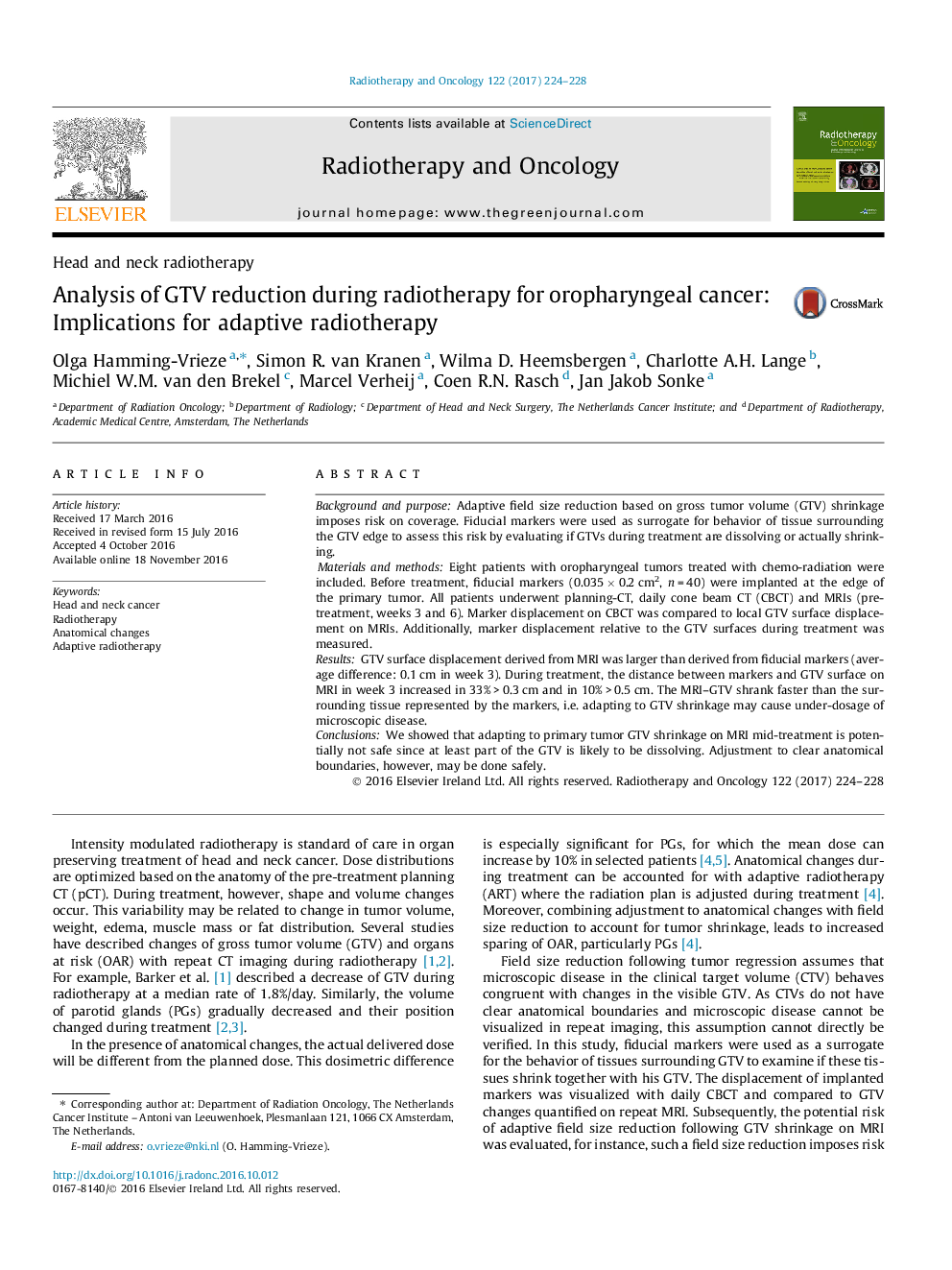| Article ID | Journal | Published Year | Pages | File Type |
|---|---|---|---|---|
| 5529597 | Radiotherapy and Oncology | 2017 | 5 Pages |
Background and purposeAdaptive field size reduction based on gross tumor volume (GTV) shrinkage imposes risk on coverage. Fiducial markers were used as surrogate for behavior of tissue surrounding the GTV edge to assess this risk by evaluating if GTVs during treatment are dissolving or actually shrinking.Materials and methodsEight patients with oropharyngeal tumors treated with chemo-radiation were included. Before treatment, fiducial markers (0.035 Ã 0.2 cm2, n = 40) were implanted at the edge of the primary tumor. All patients underwent planning-CT, daily cone beam CT (CBCT) and MRIs (pre-treatment, weeks 3 and 6). Marker displacement on CBCT was compared to local GTV surface displacement on MRIs. Additionally, marker displacement relative to the GTV surfaces during treatment was measured.ResultsGTV surface displacement derived from MRI was larger than derived from fiducial markers (average difference: 0.1 cm in week 3). During treatment, the distance between markers and GTV surface on MRI in week 3 increased in 33% > 0.3 cm and in 10% > 0.5 cm. The MRI-GTV shrank faster than the surrounding tissue represented by the markers, i.e. adapting to GTV shrinkage may cause under-dosage of microscopic disease.ConclusionsWe showed that adapting to primary tumor GTV shrinkage on MRI mid-treatment is potentially not safe since at least part of the GTV is likely to be dissolving. Adjustment to clear anatomical boundaries, however, may be done safely.
